Manually managing and tracking production is beginning to become a habit of the past. Manufacturers are switching to a new approach of executing workflows, communicating, record-keeping, and scheduling; one that is driven by digital technology: Paperless Manufacturing.
This technology consists primarily of advanced cloud-based software, AI, machine learning algorithms, and advanced analytics that make paper-based systems obsolete. Acting as paperless manufacturing software, these platforms use interactive screens, dashboards, data collection devices, sensors, and reporting filters to deliver insights in real-time without printing the results on paper.
Becoming a paperless machine shop is cost-effective. And soon, every manufacturer will use software solutions to run their business without paper. But what exactly is paperless manufacturing, and what are its key benefits?
What is Paperless Manufacturing?
Paperless manufacturing uses software to replace paper-based monitoring and tracking. It captures all information used for production records and allows companies to enforce production processes within manufacturing.
In fact, estimates show the average worker consumes 10,000 sheets of paper per year. And with the rising cost of materials, the strain on natural resources, and increased pollution, that amount of paper adds up quickly. Manufacturing is no different. And in addition to the traditional 8.5 x 11-inch format, manufacturers often use technical papers such as thermal paper printouts, large-format "green bar” paper, note and “trouble ticket” cards, and other special sizes and consistencies to manage and analyze business functions.
Paperless manufacturing relies upon software to replace all those paper formats at the shop floor level and other areas such as scheduling, purchasing, and inventory control. This software monitors production processes and uses programming, machine learning, and other functionality to enforce SOPs to ensure that the manufacturing plan is executed correctly.
In addition to monitoring and policing the activity on the shop floor, this software simultaneously captures, cleans, contextualizes, and organizes the data resulting from manufacturing to allow in-depth analysis and actionable insights for managers, technicians, and operators. By replacing paper documents in a paper-based system, manufacturing operations can optimize their business processes and make decisions in real-time without needing to print on paper.
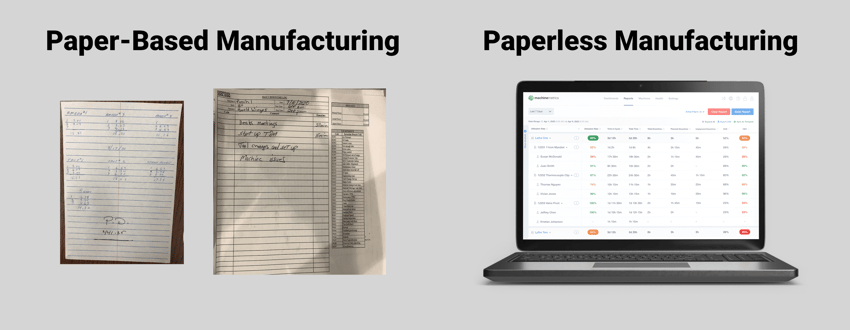
Top 7 Benefits of a Paperless Machine Shop
A paperless system can rev up business processes and make them more agile and responsive to real-world conditions. With state-of-the-art data collection and complete digitization of the shop floor and associated business processes, countless data points generated each second by an operation can be leveraged, allowing companies to go paperless.
Here are some of the many benefits manufacturers experience once their operations become digitized:
1. Productivity
An entirely digitized manufacturing operation will mean less filling in forms, less manual tracking, and more time for operators and technicians to run their equipment. Data is captured from machines, people, and systems, then analyzed in the cloud. The result is that operators and managers have actual production conditions and machine performance at their fingertips.
Intuitive dashboards and visualization tools such as Pareto charts and customized reporting allow operators to make decisions based on digital data and analysis they previously had access to by recording, reading, and interpreting paper and manually generated documents. This means that the time spent with paper is eliminated, establishing a direct connection between staff and machines that enables them to work more productively.
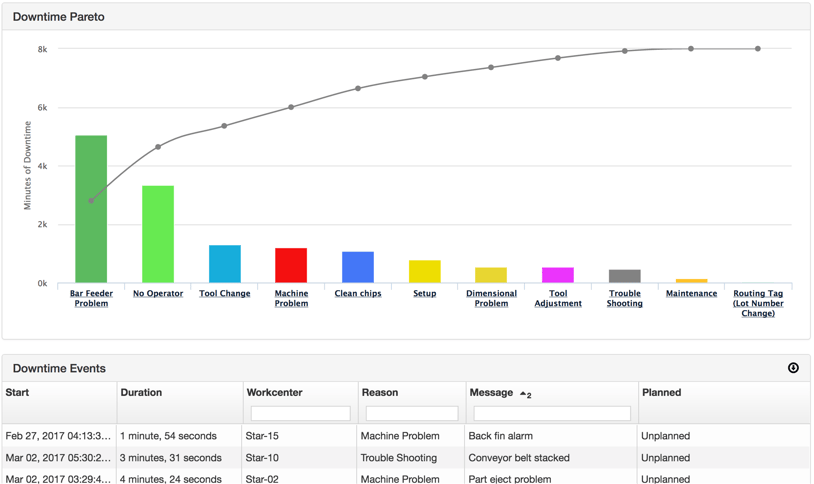 MachineMetrics Downtime pareto charts help visualize the most common reasons your shop floor is experiencing downtime, helping you prioritize continuous improvement initiatives.
MachineMetrics Downtime pareto charts help visualize the most common reasons your shop floor is experiencing downtime, helping you prioritize continuous improvement initiatives.
Going paperless is also more productive for managers and technicians. It allows them to access the current machine state by job, hour, operator, or globally and make decisions quickly. Previously, these decisions had an inherent “lag” because it took time for paper-based reporting to be recorded, collected, and aggregated for use by managers. Now, with digital data capture, managers can make decisions based on what is happening now.
2. Data Accuracy
People make mistakes. And in complex manufacturing environments where paper systems require categorization of data, many data points are miscategorized due to operator bias. Paperless manufacturing software relies on data capture at the machine or spindle level.
By capturing the run state of the equipment at the source of the data generation, there is no need to log the data manually and no need to print it on paper. The digitization of manufacturing eliminates those errors by collecting, organizing, and contextualizing the data at the machine end.
This is possible because data can be captured through many methods yet all end up in the cloud for accessibility. Today, much modern OEM equipment comes with data capture embedded and is available for wireless or Ethernet collection.
On other equipment, sensors and measurement devices can be installed at the edge to capture data and send it via a cellular connection. And even legacy equipment can be retrofitted with devices that capture frequency variations that can be analyzed to make sense of the information. Collectively, these methods of data capture ensure that errors previously caused by human error or bias in a paper-based system are eliminated.
3. More Effective Continuous Improvement Programs
As managers and team members begin to identify trouble areas on the floor, continuous improvement programs can address real problems identified as they occur. Where paper-based systems had been in place, digital data capture now helps identify equipment utilization issues, highlight training deficiencies, and thoroughly vet procedures with accurate information.
Manufacturers looking to go paperless will find that using manufacturing software to monitor production may reduce or eliminate paper and change shop methods and SOPs themselves. Because the lag in collecting and analyzing paper is eliminated, there is more time for value-added process activity, altering the process and making it leaner.
4. Operating in Real-time
The digital revolution has altered the way companies produce. Intuitive screens and human-machine interface systems now exist where shop floors were often cluttered with paper, files, and job tickets. These interfaces and all the equipment activity are captured, analyzed, and delivered for consumption in real-time.
Real-time data and analytics mean that order status, inventory (on-hand and WIP), and other information related to business processes are up to date. It also means that managers can view this analysis at the spindle, machine, department, or factory level to ensure the completion of jobs and that lead times are not missed for delivery.
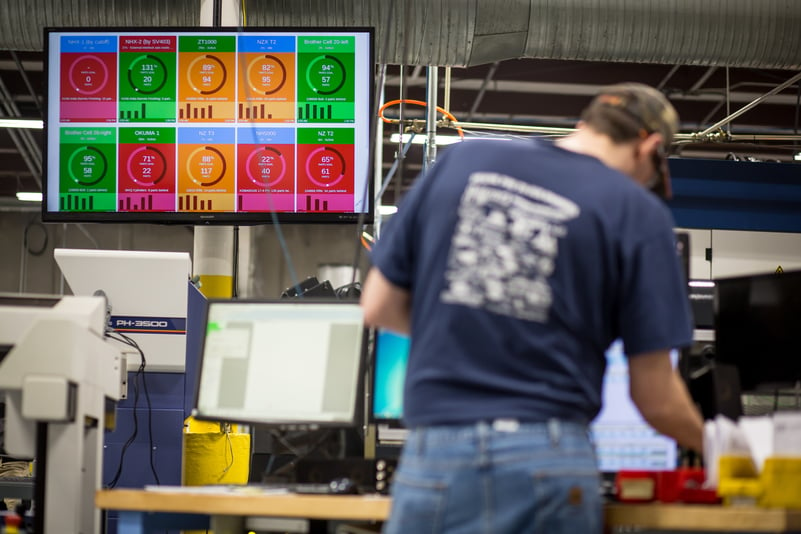
Schedules can be sent electronically, and change orders or engineering changes can be transmitted through the platform without initiating a paper trail that might arrive at the work center too late for implementation. BOMs can be adjusted, and routings are more accurate. And alerts for problems or bottlenecks can be automatically identified and immediately pushed to those who can make the decisions to reduce downtime.
5. Cost Savings
Of course, for any business, going paperless means that the cost of the actual paper, storage, and handling are all eliminated, freeing up valuable dollars for improved cash flow. But cost savings go beyond that. With higher productivity, operation in real-time, and better process optimization – made possible by digitization and analytics – the cost is reduced in areas not related to paper, contributing directly to the bottom line.
Schedules, BOMs, inventory management, and other functional areas can operate faster and with more confidence because of the quality of the data. Decisions are made when needed most and are no longer tied to a printed report that must make its way through the production chain. This means that the insights are immediately actionable, saving time, reducing quality fallout, clearing up compliance and engineering issues on the fly, and saving costs of waiting or producing replacements.
6. Faster Approval and Compliance
Many finished goods in discrete manufacturing are produced for medical, aerospace, or defense projects. As a result, they require a complex approval chain to validate documents and ensure their production to tight specifications. This approval process can be automated to reduce time, improve the accuracy of any required approvals, and increase first pass quality yield.
The same goes for engineering changes. In the past, paper drawings often accompanied paper job tickets for the scheduled goods. If the drawings were wrong, or if a change was required, the operator had to stop work in cases where the error was detected. Or the part needed to be remade if the change did not make it down to the shop floor in time.
Advanced data capture and analytics also means that compliance can be automated too. Just as high-value parts need different levels of approval, they may also be subject to strict compliance validation. With a paper system, this added a time-consuming level of approving documents to the completed job. With digitization, compliance, like engineering changes, can be automated without paper.
7. Improved Collaboration
Just as the paper engineering changes and paper compliance above, communication in paper-based systems was traditionally limited. Because the lag in moving paper through the system was so long, communication tended to be via paper as well.
By automating these processes electronically, communication allows for collaboration directly from the manufacturing floor to engineering, compliance, scheduling, inventory control, and management. Collected data unsiloes data and creates a single source of truth for all information.
It also creates greater transparency allowing improved communication and collaboration across the enterprise. As each team member has access to the same up-to-date information, their tasks are immediately updated to the whole system. Operations are more flexible, yet they can continue to operate because no one is waiting on a signed document to proceed.
Going Paperless in Manufacturing
Going paperless begins with automating data collection across the shop floor, starting with the source of production: the machines and people closest to production.
Building a best-of-breed ecosystem that enables the standardization of data, provides immediate visibility to key stakeholders, enhances communication, automation, and continuous innovation.
MachineMetrics offers a wide range of solutions, including production monitoring, conditions monitoring, predictive maintenance, and process optimization applications for any discrete manufacturing environment. Our system can even capture high-frequency data for equipment and conditions challenging to capture with other platforms. And MachineMetrics system can be easily integrated via API with other enterprise systems such as ERP and MRP systems and quality management software. Contact us today to find out how you can begin a digital journey in manufacturing, become genuinely paperless, and increase profitability.
Want to See the Platform in Action?


.png?width=1960&height=1300&name=01_comp_Downtime-%26-Quality_laptop%20(1).png)






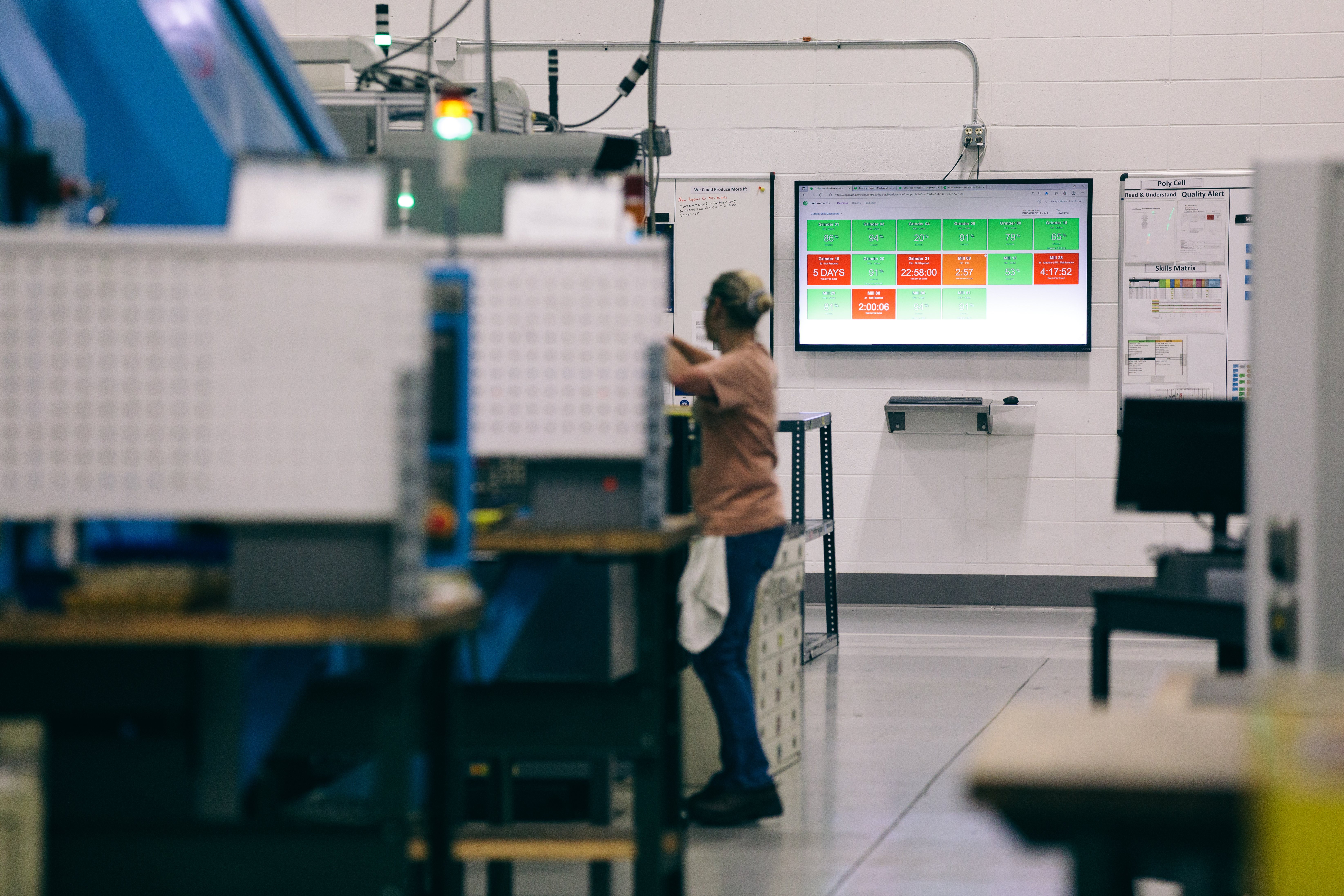
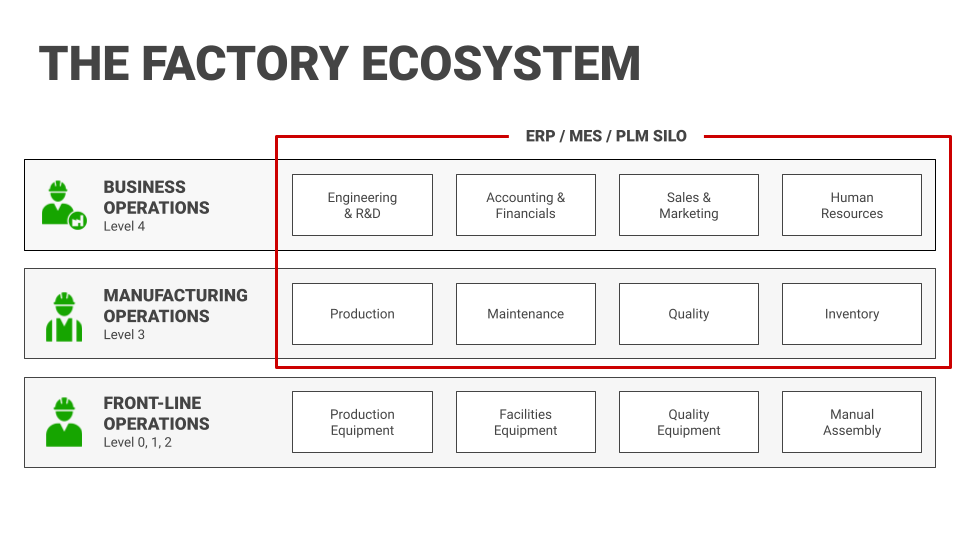
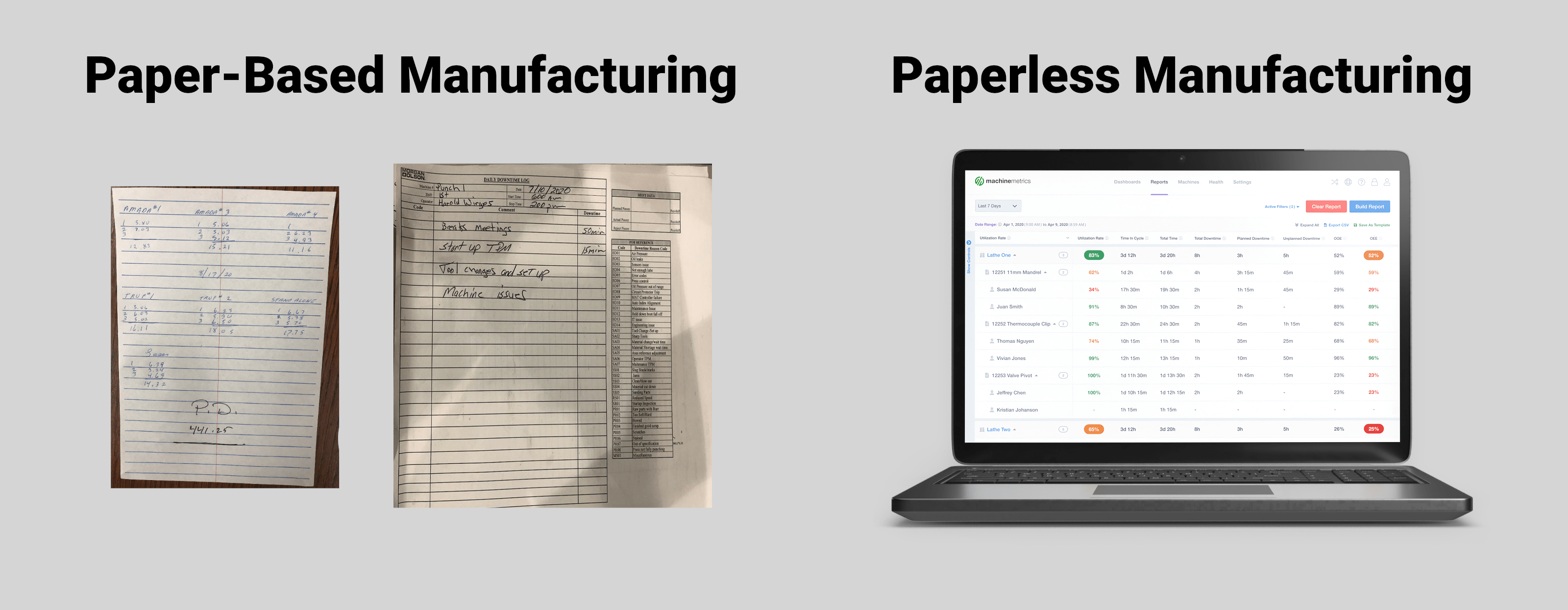
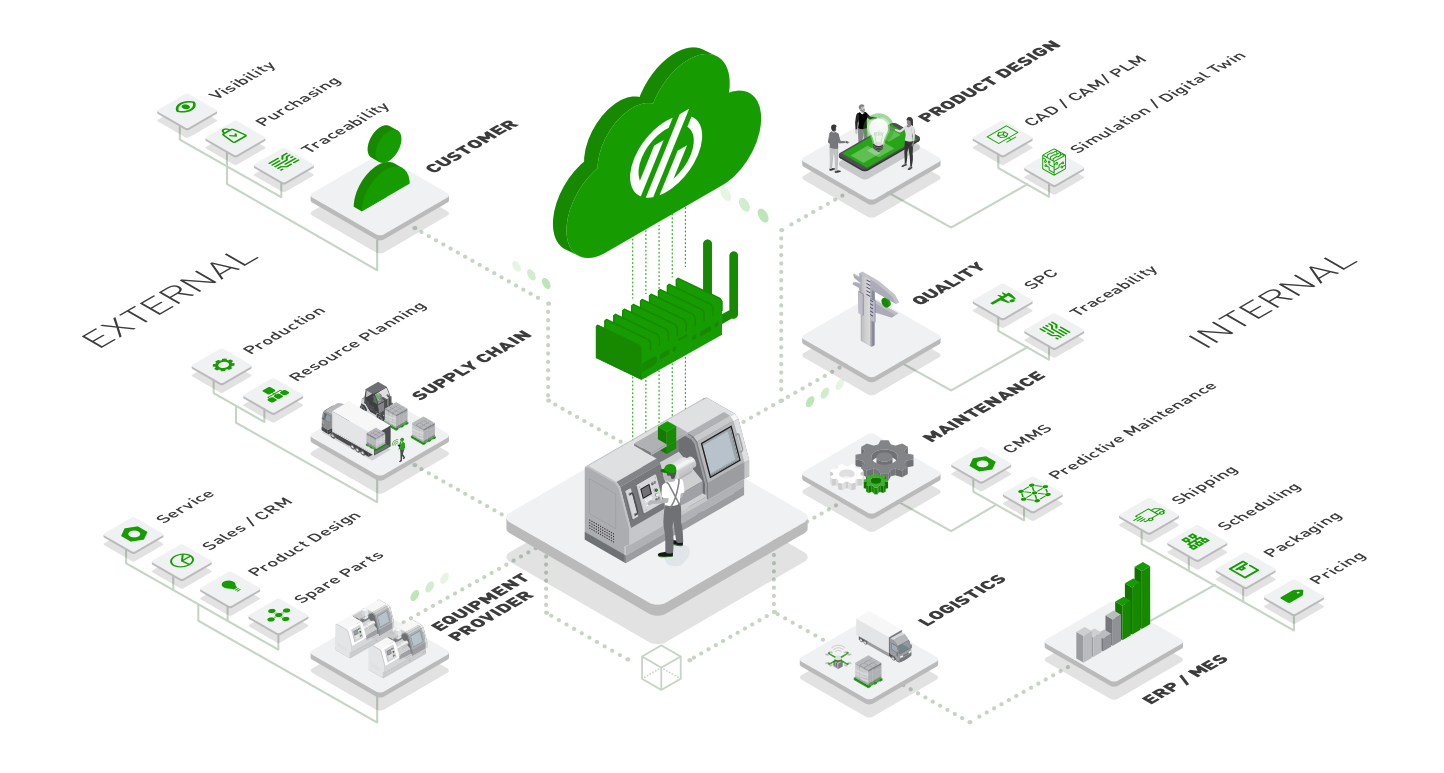
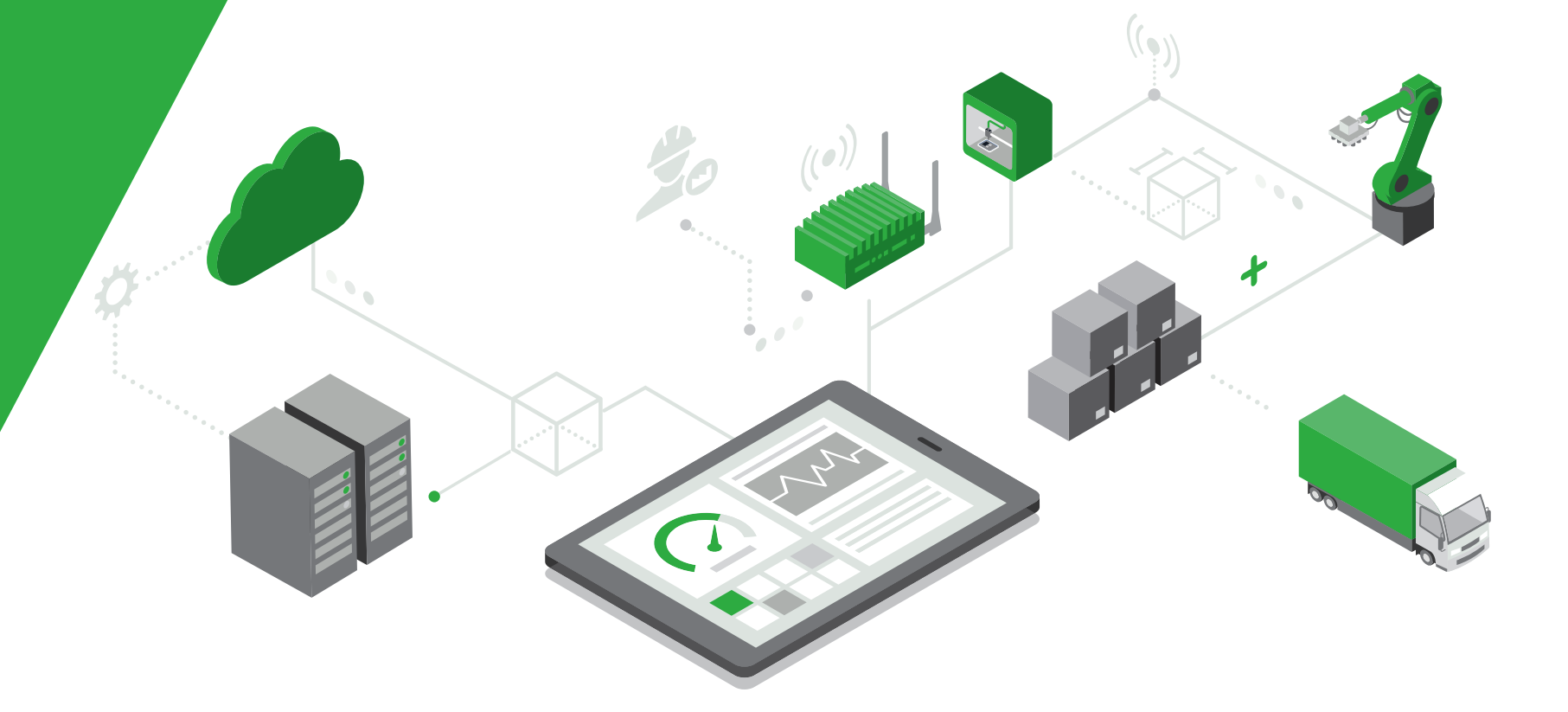
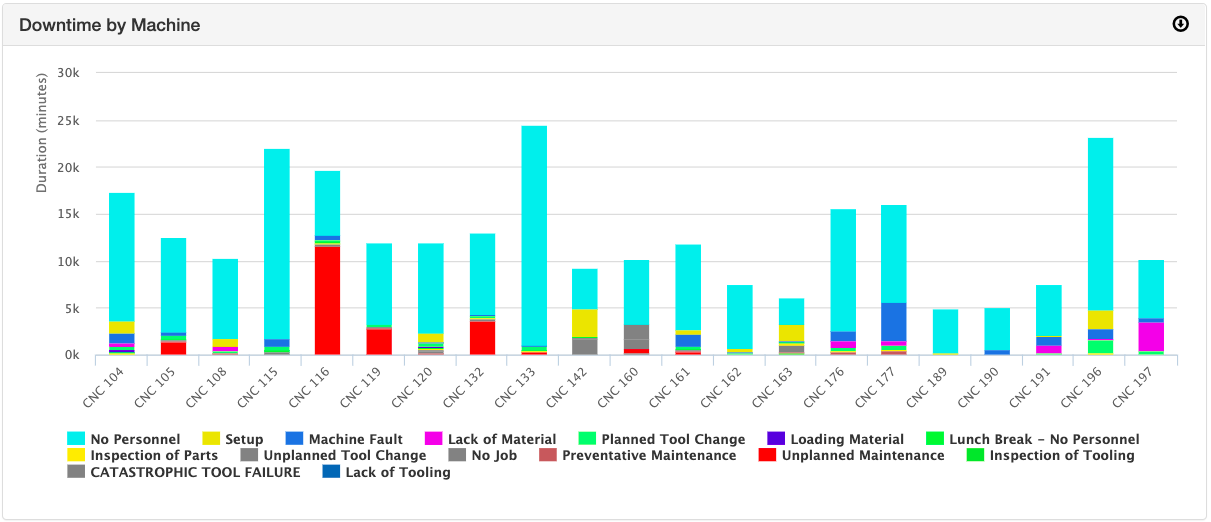
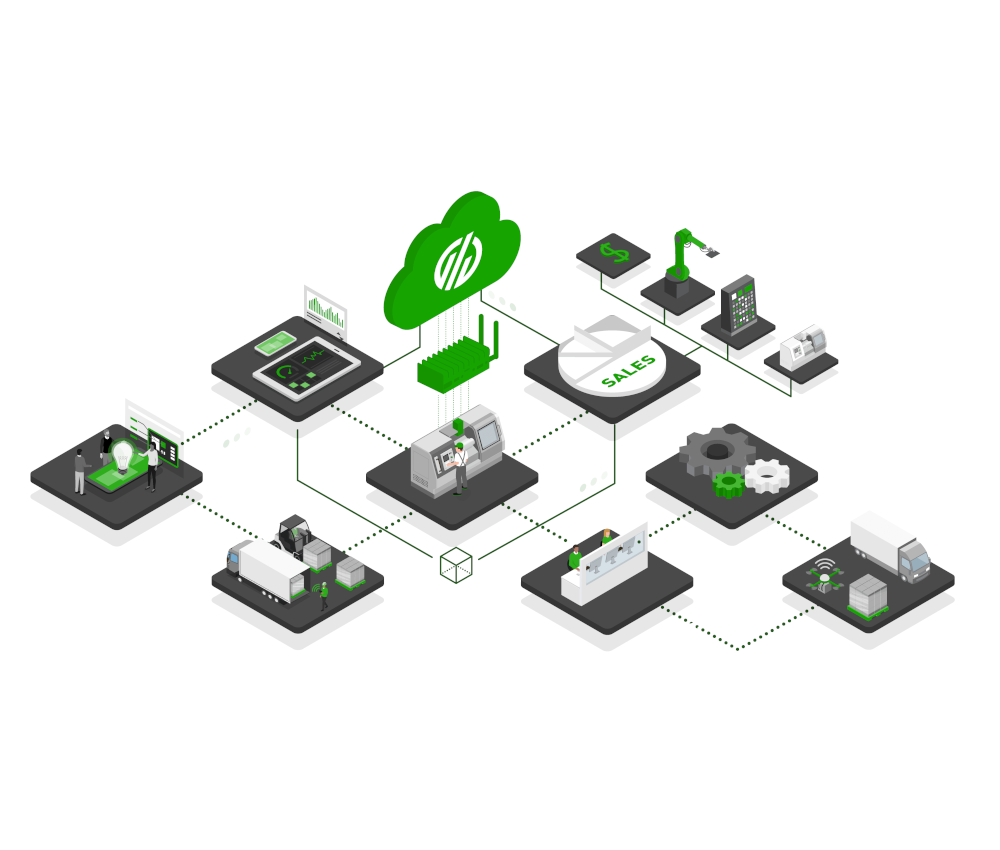
Comments